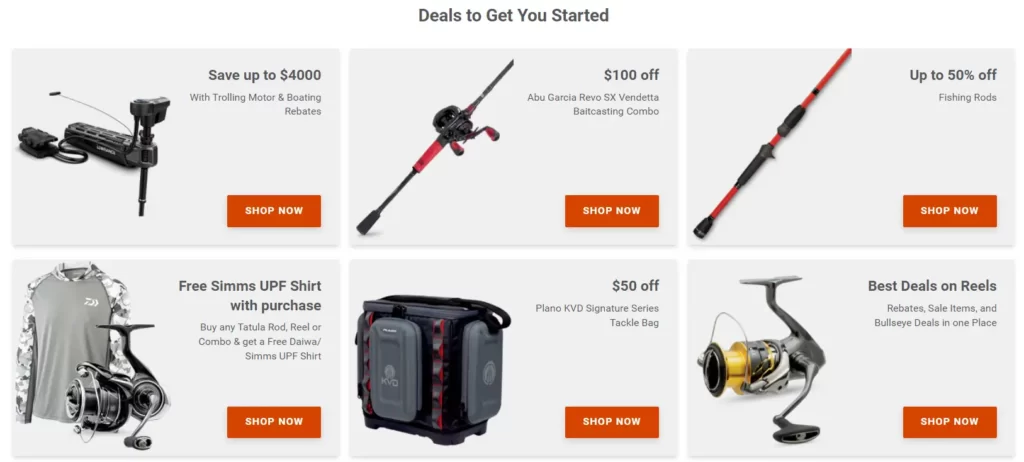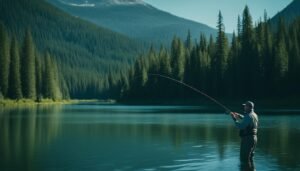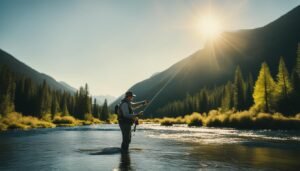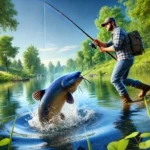Explore Canada's Ultimate Fishing, Hunting, and Wildlife Adventures
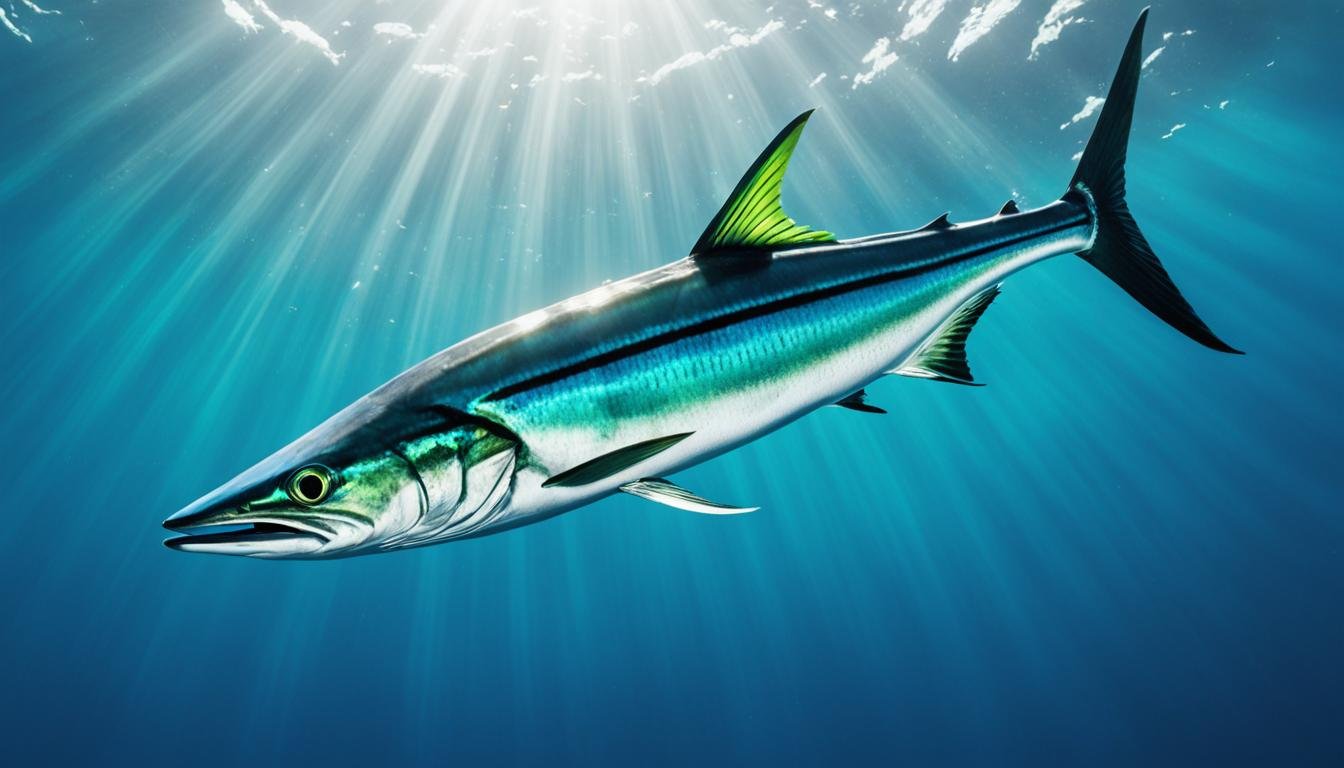
Reel in the Thrills: Your Guide to Wahoo Fish
Table of Contents
Welcome to your comprehensive guide on Wahoo fishing!
If you’re looking for an adrenaline-pumping fishing experience, targeting the Wahoo fish is the way to go. Renowned for their speed and thrilling fights, Wahoo fish are a top choice for anglers seeking an exhilarating challenge. Whether you’re a seasoned angler or just starting out, this guide will equip you with all the information you need to make the most of your Wahoo fishing expeditions.
From the best Wahoo fishing hotspots in the US to tackle and equipment essentials, effective techniques for hooking Wahoo, and tips for fishing in different weather conditions, this guide covers it all.
Disclosure: When you purchase a service or a product through our links, we sometimes earn a commission, at no extra cost to you.
Say goodbye to guessing games and increase your chances of success with our expert tips and insights.
So, get ready to embark on an unforgettable adventure and reel in the thrills of Wahoo fishing. Let’s dive in!
Key Takeaways:
- Wahoo fish are known for their speed and thrilling fights, making them a popular target for anglers.
- This comprehensive guide will provide you with all the information you need to reel in the thrills of Wahoo fishing.
- Discover the best Wahoo fishing hotspots in the US, tackle and equipment essentials, effective techniques for hooking Wahoo, and tips for fishing in different weather conditions.
- Increase your chances of success and have an unforgettable Wahoo fishing experience.
- Whether you’re a seasoned angler or a beginner, this guide has something for everyone.
Introduction to Wahoo Fishing
Welcome to the exciting world of Wahoo fishing! In this section, we will introduce you to the basics of Wahoo fishing and provide you with interesting facts about this fast and fierce game fish. Get ready to dive into the thrilling world of Wahoo!
Wahoo fish are known for their impressive characteristics that make them a favorite among anglers. These sleek and powerful predators can reach impressive sizes, with average weights ranging from 20 to 60 pounds. With their torpedo-shaped bodies and razor-sharp teeth, Wahoo are built for speed and hunting.
One of the most fascinating aspects of Wahoo fishing is their remarkable speed. They are capable of reaching speeds of up to 60 miles per hour, making them one of the fastest fish in the ocean. Their lightning-fast strikes and explosive runs provide anglers with an adrenaline-pumping experience.
Understanding the habitats and migration patterns of Wahoo is crucial for successful fishing. Wahoo are found in tropical and subtropical waters around the world, with hotspots in locations such as the Florida Keys, the Caribbean, and the Pacific Ocean. They are known to migrate between different regions, following warm ocean currents and chasing their prey.
The allure of Wahoo fishing lies not only in the thrill of the catch but also in the challenge it presents. These cunning predators can be elusive and unpredictable, requiring anglers to employ various techniques and strategies to entice them. The combination of their speed, power, and unpredictable behavior adds an element of excitement to every Wahoo fishing expedition.
Disclosure: When you purchase a service or a product through our links, we sometimes earn a commission, at no extra cost to you.
Now that you have a basic introduction to Wahoo fishing and an understanding of their unique characteristics, it’s time to dive deeper into the world of Wahoo fishing hotspots. In the next section, we’ll explore the best places in the US to catch Wahoo and uncover their hidden treasures.
Wahoo Fishing Hotspots in the US
In this section, we will explore some of the best Wahoo fishing hotspots in the United States. Whether you’re an experienced angler or a beginner looking for thrilling fishing opportunities, these locations are sure to satisfy your Wahoo fishing cravings.
Fly to Your Canadian Fishing Paradise
Book cheap flights to Canada's best fishing spots!
One search, all flights
Find the best deals to your favorite fishing spots
Kiwi.com Guarantee
Travel worry-free with our protection
Trusted by millions
Join anglers booking cheap flights with ease
Disclosure: When you purchase a service or a product through our links, we sometimes earn a commission, at no extra cost to you.
Florida Keys: Wahoo Paradise
The Florida Keys, a string of tropical islands stretching about 120 miles off the southern tip of Florida, is renowned for being a Wahoo paradise. With its crystal-clear waters and abundant marine life, the Florida Keys offer some of the most productive Wahoo fishing in the world. Year-round, you have the chance to hook into these fast and powerful game fish, making it a must-visit destination for Wahoo enthusiasts.
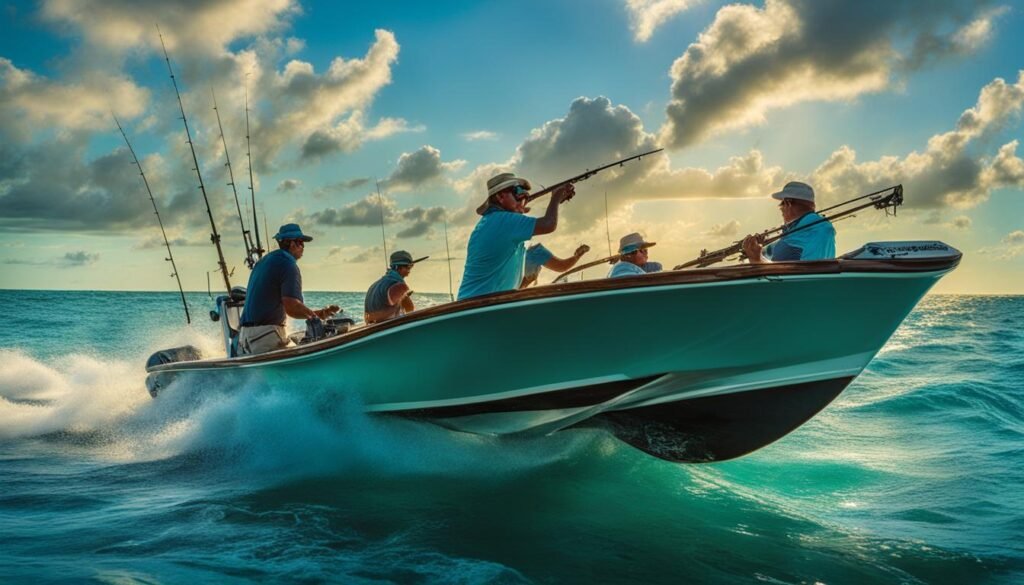
Alijos Rocks: A Wild Destination
If you’re seeking a wild and remote fishing experience, look no further than Alijos Rocks. Located approximately 180 miles west of The Ridge, Alijos Rocks is a seamount that rises from the depths of the Pacific Ocean. This hidden gem offers phenomenal fishing opportunities, including some of the best Wahoo action you can find. Make sure to pack your heavy-duty tackle and be prepared for an unforgettable adventure.
San Diego Sportfishing: Seasonal Thrills
San Diego, California, is not only a popular tourist destination but also a fantastic spot for sportfishing, including Wahoo fishing. Depending on the time of year, you can experience seasonal thrills and target Wahoo off the coast of San Diego. From summer to fall, these waters come alive with the presence of Wahoo, providing anglers with exciting opportunities to battle these speed demons. Plan your trip wisely and join the San Diego sportfishing community for an adrenaline-pumping Wahoo fishing adventure.
Now that we’ve covered some of the top Wahoo fishing hotspots in the US, it’s time to prepare for your next angling expedition. In the following sections, we’ll delve into the allure of the Wahoo fish, tackle and equipment essentials, techniques for hooking Wahoo, and much more. Let’s dive in!
The Allure of the Wahoo Fish
The Wahoo fish is renowned for its captivating allure and thrilling characteristics. Anglers from around the world are drawn to the exhilarating experience of Wahoo fishing, driven by the pursuit of this high-speed game fish and the adrenaline-pumping battles it offers.
One of the most alluring aspects of Wahoo fishing is the incredible speed of these fish. With speeds of up to 60 miles per hour, Wahoo are known for their lightning-fast strikes and explosive runs. The sheer power and agility displayed by a hooked Wahoo make it a true test of an angler’s skill and determination.
Not only are Wahoo fast, but they are also highly aggressive predators. Their razor-sharp teeth and voracious appetite make them formidable opponents. Landing a Wahoo requires finesse and precision, as they are known for their cunning and ability to break free from hooks and lines.
“Reeling in a Wahoo is like taking on a wild beast. The sheer speed and power of these fish make every catch a heart-pounding adventure.” – Experienced angler
The pursuit of catching a Wahoo is not only about the thrill of the catch but also about the prestige that comes with it. Among anglers, landing a Wahoo is considered a significant achievement and a testament to one’s angling skills. It is a trophy fish that symbolizes dedication, perseverance, and the ultimate triumph over nature’s forces.
With its blend of blazing speed, ferocity, and the challenge it presents, the Wahoo fish has captivated the hearts of anglers worldwide. It embodies the spirit of adventure and the pursuit of excitement that fishing enthusiasts seek.
Tackle and Equipment Essentials
When it comes to Wahoo fishing, having the right tackle and equipment is essential for a successful and enjoyable experience. From selecting the right rods and reels to configuring your line and leader setup, each component plays a crucial role in your chances of landing these elusive game fish. Additionally, understanding the proper use of trolling gear and techniques can greatly increase your chances of enticing Wahoo bites. Let’s dive into the details of these tackle and equipment essentials.
Selecting the Right Rods and Reels
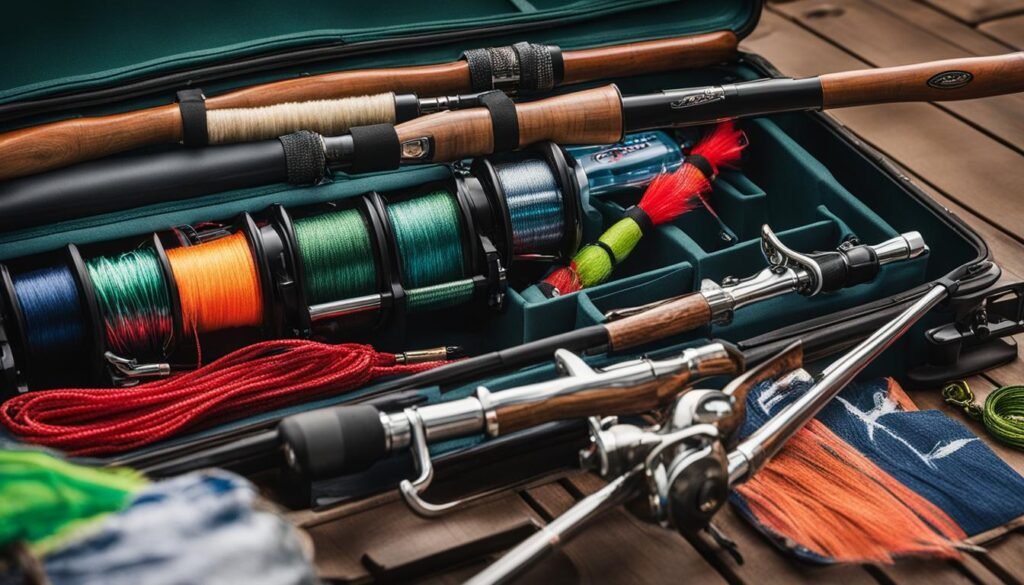
When it comes to Wahoo fishing, choosing the right rods and reels is paramount. Look for rods that are lightweight, yet sturdy enough to handle the powerful runs and aggressive strikes of Wahoo. Opt for casting rods with a medium to heavy power rating, as this will give you the strength and sensitivity needed to detect bites and control the fight. As for reels, consider low-profile baitcasting or spinning reels with a high gear ratio to accommodate the fast and aggressive nature of Wahoo.
Line and Leader Configuration
Having the proper line and leader configuration is crucial when targeting Wahoo. For the main line, use a high-quality braided line with a test strength ranging from 40 to 80 pounds, depending on the size of Wahoo you’re targeting. This type of line offers excellent sensitivity, strength, and low stretch, allowing you to feel even the faintest of bites and handle the powerful runs of Wahoo without fear of breakage.
When it comes to leaders, a wire leader is highly recommended to protect against Wahoo’s sharp teeth. Choose a heavy-duty wire leader with a test strength of at least 100 pounds to ensure it can withstand the powerful jaw strikes of these game fish. Additionally, attaching a reliable ball bearing swivel between the main line and the leader can help prevent line twist and improve the action of your bait or lure.
Trolling Gear and Techniques
Trolling is one of the most effective techniques for targeting Wahoo. It allows you to cover a larger area of water and present your lures or baits at various depths and speeds, increasing your chances of enticing these speedy predators. When it comes to trolling gear, opt for high-quality trolling reels with a high line capacity and lever drag system for smooth and controlled retrieves.
For lures and baits, choose a variety of options that mimic the natural prey of Wahoo, such as large skirted trolling lures, diving plugs, or swimming baits. Experiment with different colors and sizes to see what attracts Wahoo the most. Additionally, incorporating a planer or downrigger into your trolling setup can help you target Wahoo at specific depths and increase your chances of success.
| Tackle and Equipment | Recommendation |
|---|---|
| Rods | Casting rods with medium to heavy power rating |
| Reels | Low-profile baitcasting or spinning reels with high gear ratio |
| Main Line | High-quality braided line with a test strength of 40-80 pounds |
| Leaders | Heavy-duty wire leaders with a test strength of at least 100 pounds |
| Trolling Gear | High-quality trolling reels with a high line capacity and lever drag system |
| Lures and Baits | Large skirted trolling lures, diving plugs, swimming baits |
| Planer or Downrigger | To target Wahoo at specific depths |
Techniques for Hooking Wahoo
In order to have a successful Wahoo fishing trip, it’s essential to employ effective techniques for hooking these fast and elusive game fish. In this section, we’ll explore three techniques that have proven to be successful: trolling, live bait fishing, and utilizing downriggers and planers. Each of these techniques offers a unique approach to enticing Wahoo bites and increasing your chances of a thrilling catch.
Trolling: The Premier Method
Trolling is widely regarded as the premier method for targeting Wahoo. By using this technique, you can cover a large area of water and present your lures at various depths and speeds to mimic the swimming action of Wahoo’s natural prey. To effectively troll for Wahoo, it’s important to use specific lures and baits that have proven to be enticing to these fish. Some popular choices include high-speed trolling lures, such as bullet-shaped lures or weighted heads with skirts, as well as artificial baits that imitate the movement of small fish or squid.
When trolling for Wahoo, it’s also crucial to maintain the appropriate speed. Wahoo are known for their incredible speed, so trolling at high speeds between 8 to 12 knots is recommended. Additionally, incorporating erratic movements and sudden changes in speed can trigger a strike from these aggressive predators.
Live Bait Fishing: The Finesse Approach
While trolling is highly effective for targeting Wahoo, live bait fishing can provide a finesse approach that can entice even the most cautious fish. When using live bait, it’s crucial to select the right bait and set up your rig correctly.
For live bait fishing for Wahoo, one of the most popular choices is a rigged ballyhoo. Ballyhoo are natural baitfish that Wahoo find irresistible. To rig a ballyhoo, attach a circle hook to the bait’s head or body, ensuring it is secure and won’t detach during the retrieve. This presentation mimics the natural swimming action of the baitfish, making it appealing to Wahoo. When fishing with live bait, it’s important to vary your retrieval speed and incorporate occasional pauses or jerks to imitate the movements of a wounded fish, attracting the attention of Wahoo.
Utilizing Downriggers and Planers
To further increase your chances of a successful Wahoo catch, consider utilizing downriggers and planers. These tools allow you to present your baits at specific depths, effectively targeting Wahoo that may be positioned below the surface.
Downriggers are used to deploy baits at controlled depths. By attaching a downrigger to your boat and setting the desired depth, you can present your lures or baitfish precisely where Wahoo are likely to be feeding. Adding a planer to your line can also be beneficial, as it causes the bait to dive deeper, making it more enticing to Wahoo. This combination of downriggers and planers can help you reach the desired depth and increase your chances of enticing a strike.

By utilizing a combination of trolling, live bait fishing, and downriggers or planers, you can significantly enhance your chances of hooking Wahoo during your angling adventures. These techniques offer a versatile and effective approach to landing this fast and aggressive game fish. However, keep in mind that Wahoo can be unpredictable, so be prepared to adapt your tactics based on changing conditions and the behavior of the fish.
Best Times to Fish for Wahoo
In this section, we’ll discuss the best times to fish for Wahoo. By understanding the optimal fishing conditions and seasons for targeting Wahoo, you can significantly increase your chances of success.
Wahoo fishing seasons vary depending on the location, but generally, the prime time to target Wahoo is during the warmer months when water temperatures rise. In many regions, this coincides with spring and summer, typically from April through September.
Optimal fishing conditions for Wahoo:
- Water temperature: Wahoo prefer water temperatures of 70-86°F (21-30°C). Look for areas with water within this temperature range for the best results.
- Water clarity: Wahoo are attracted to clear, blue waters. Target areas with good visibility to increase your chances of finding them.
- Weather conditions: Wahoo are known to be more active during calm and stable weather conditions. Avoid fishing during storms or rough seas, as it can make it difficult to locate and target Wahoo.
- Tides: Timing your fishing trips with incoming or outgoing tides can be beneficial when targeting Wahoo. They are often more active during tide changes, which can increase their feeding behavior.
- Moon phase: Some anglers believe that Wahoo are more active during certain moon phases, such as the full moon or new moon. Pay attention to the moon phase when planning your Wahoo fishing trips.
Keep in mind that these are general guidelines, and local conditions may affect the presence and behavior of Wahoo. It’s always a good idea to consult local fishing reports, talk to experienced anglers, or hire a knowledgeable fishing guide to get the most up-to-date information on the best times and locations for Wahoo fishing.

Weather Considerations for Wahoo Fishing
In order to have a successful Wahoo fishing trip, it is crucial to take weather considerations into account. Adapting to sea conditions and understanding the impact of seasonal changes can greatly improve your chances of a fruitful fishing experience. Additionally, paying attention to ocean currents can provide valuable insights into the behavior and feeding patterns of Wahoo.
Adapting to Sea Conditions
When targeting Wahoo, it is important to adapt your fishing strategies to the prevailing sea conditions. Wahoo are known to surface in choppy waters, so it’s beneficial to focus your efforts during periods of rougher seas. These conditions can disorient their prey, making Wahoo more likely to strike. Keep an eye out for changes in wind patterns and surface activity, as these can indicate optimal sea conditions for Wahoo fishing.
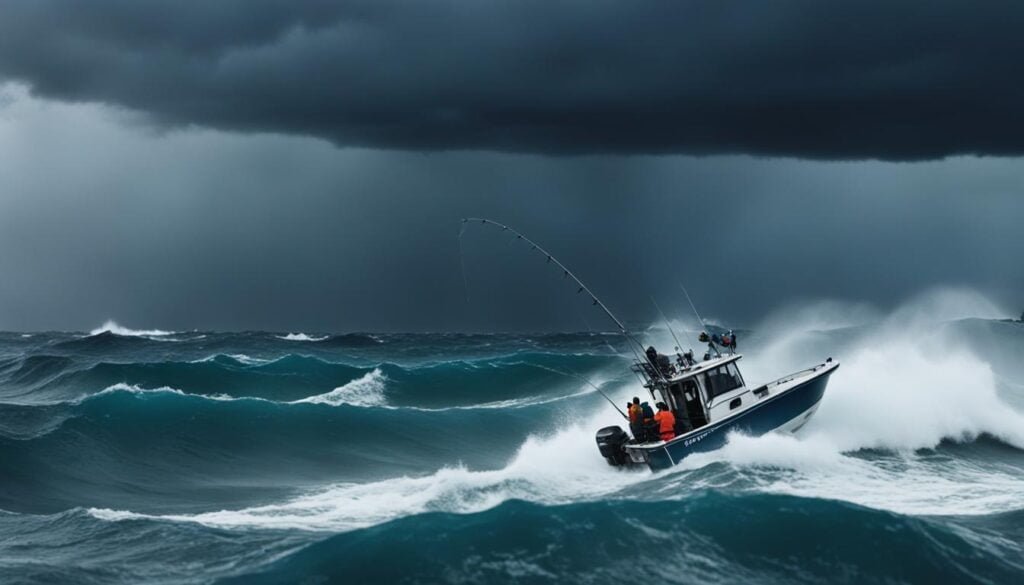
Seasonal Strategies
Seasonal changes have a significant impact on Wahoo fishing. Understanding the specific behaviors and movement patterns of Wahoo during different seasons can help you refine your approach. For example, in the warmer months, Wahoo tend to migrate closer to shore, making them more accessible to coastal anglers. In contrast, during colder months, they may move further offshore, requiring a longer boat trip to reach them. By staying informed about the seasonal dynamics, you can plan your fishing trips accordingly and increase your chances of success.
Paying Attention to Ocean Currents
Ocean currents play a crucial role in the distribution and movement of Wahoo. These currents can influence the concentration of baitfish and other prey in certain areas, attracting Wahoo to those locations. By studying ocean current charts and understanding how they interact with underwater structures, you can identify potential hotspots for Wahoo feeding and increase your chances of encountering them. Additionally, certain current patterns, such as upwellings, can create favorable fishing conditions by bringing nutrient-rich water to the surface, attracting Wahoo and other game fish.
| Weather Consideration | Adaptation |
|---|---|
| Choppy waters and rough seas | Focus fishing efforts during these conditions as Wahoo are more likely to strike. |
| Seasonal changes | Analyze changing behaviors and movement patterns of Wahoo to refine fishing strategies. |
| Ocean currents | Study current charts to identify potential feeding hotspots and adjust fishing locations accordingly. |
The Unique Diet of the Wahoo
In this section, we’ll delve into the unique diet of the Wahoo fish. Wahoo are voracious predators and their diet primarily consists of a variety of prey items. By understanding their feeding habits and prey preferences, you can better tailor your fishing approach to increase your chances of success.
“Understanding the feeding habits of Wahoo is crucial for selecting the most effective lures and baits to entice them.”
Prey items of the Wahoo include:
- Squid
- Octopus
- Small fish, such as mackerel and herring
- Crustaceans, like shrimp and crabs
These prey items form the basis of the Wahoo’s diet and are key to their survival. The Wahoo’s predatory nature and impressive speed make them highly skilled hunters in the ocean.
To attract Wahoo, it is important to mimic their natural prey items with your choice of lures and baits. Using lures that resemble squid or small fish can be particularly effective in enticing Wahoo bites. Additionally, live bait fishing with small fish or squid can also yield great results.

The image above showcases the variety of prey items that are part of the Wahoo’s diet. Understanding these prey items and their importance to the Wahoo’s feeding habits will give you an advantage when targeting this exciting game fish.
Now that you have a better understanding of the unique diet of the Wahoo, you can adjust your fishing strategies and choose the most suitable lures and baits to entice these elusive predators.
Conclusion
As we conclude this comprehensive guide to Wahoo fishing, take a moment to reflect on the thrill of the catch and the unforgettable experiences it can offer. Wahoo fishing is not just a sport; it’s an adventure that allows you to challenge yourself and connect with nature in a unique way. The adrenaline rush when a Wahoo strikes and the intense fight that follows are moments that will stay with you forever.
However, as anglers, it’s essential to consider the conservation of Wahoo fish and the future of Wahoo fishing. With increased fishing pressure and environmental changes, maintaining the sustainability of Wahoo populations is crucial. By practicing responsible fishing techniques, respecting fishing regulations, and releasing undersized or excess catches, we can contribute to the preservation of Wahoo for generations to come.
The future of Wahoo fishing holds exciting possibilities. Advances in technology, such as improved fishing gear and navigation systems, continue to enhance the angler’s capabilities. Additionally, ongoing research and conservation efforts aim to better understand the Wahoo’s behavior, migration patterns, and habitat needs. By staying informed and involved, we can contribute to the preservation and growth of Wahoo fish populations while enjoying the thrill of Wahoo fishing for years to come.
FAQ
What makes Wahoo fish so exciting to catch?
Wahoo fish are known for their incredible speed and powerful runs, providing anglers with thrilling fights and a memorable fishing experience.
Where can I find Wahoo fish in the US?
Some of the top Wahoo fishing hotspots in the US include the Florida Keys, Alijos Rocks, and San Diego sportfishing.
What tackle and equipment do I need for Wahoo fishing?
Selecting the right rods and reels, choosing the ideal line and leader configuration, and utilizing trolling gear are essential for Wahoo fishing success.
What are the best techniques for hooking Wahoo?
Trolling, live bait fishing, and using downriggers and planers are effective techniques for enticing Wahoo bites.
When is the best time to fish for Wahoo?
Understanding the different seasons and optimal fishing conditions will increase your chances of success when targeting Wahoo.
How do weather conditions impact Wahoo fishing?
Adapting to sea conditions, adjusting your approach to different weather patterns, and paying attention to ocean currents are important factors when targeting Wahoo.
What do Wahoo fish eat?
Wahoo commonly feed on prey items such as squid, octopus, small fish, and crustaceans.
Source Links
- https://seafishingadventurer.com/the-high-thrill-of-wahoo-fishing-in-the-caribbean/
- https://www.bdoutdoors.com/fishing/how-to-fish/long-range-fishing-wahoo-guide/
- https://fishingbooker.com/blog/wahoo-fishing/


